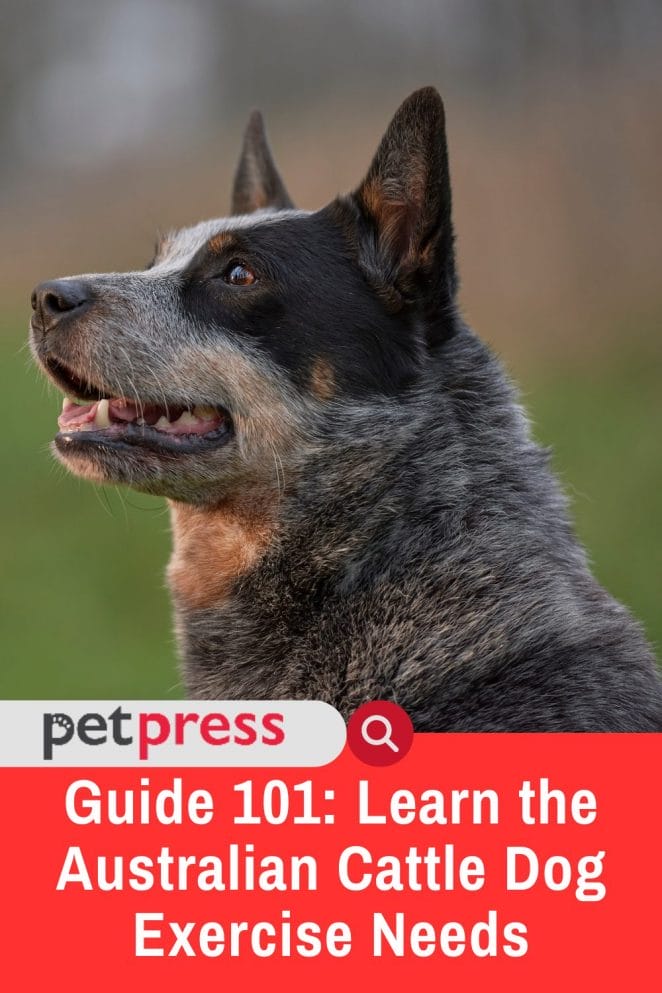
Welcome to our blog post on Australian Cattle Dogs, a breed known for their remarkable energy and exercise requirements. In this article, we will delve into the Australian cattle dog exercise needs and provide practical tips on tailoring exercise routines that will keep them happy and healthy.
Understanding the Australian Cattle Dog
The History and Origin of the Australian Cattle Dog
The Australian Cattle dog has an intriguing history that dates back to the early 19th century. Originally developed in Australia, this breed was specifically bred for herding livestock, particularly cattle. Their working heritage comprehends the Australian cattle dog exercise needs and mental stimulation.
Australian cattle dogs were created by crossing the native Dingoes with herding dogs brought by European settlers, such as the Collie and Dalmatian. The intention was to breed a dog that could withstand the harsh Australian conditions, including extreme temperatures, rough terrain, and long distances.
The Working Heritage of Australian Cattle Dogs
Due to their purpose as working dogs, Australian Cattle Dogs possess a strong work ethic and exceptional drive. Their instinct to herd and control livestock is deeply ingrained in their DNA.
Australian cattle dogs require ample exercise and mental stimulation. Their ancestors were bred to work long hours in demanding environments, which developed their high energy levels and endurance.
Without regular opportunities to engage in physical and mental activities, Australian Cattle Dogs may become bored, and restless, and exhibit behaviors such as excessive barking, destructiveness, or attempting to herd family members or other pets.

Australian Cattle Dog Physical Characteristics
With their compact, muscular bodies and distinctive coat colors ranging from blue to red speckled, Australian Cattle Dogs are easily recognizable.
Size and Build: Australian Cattle Dogs are medium-sized dogs with a sturdy and compact build. They typically stand between 17 to 20 inches (43 to 51 cm) tall at the shoulder and weigh around 30 to 50 pounds (14 to 23 kg). This size allows them to be nimble and agile, crucial traits for herding and maneuvering livestock.
Coat and Colors: Their double coat is weather-resistant, helping them withstand various climates. The outer coat is dense and straight, while the undercoat is soft and insulating. Their distinctive coat colors not only add to their aesthetic appeal but also serve a practical purpose, allowing them to blend in with cattle.
Intelligence and Trainability: Australian Cattle Dogs are highly intelligent dogs, known for their problem-solving abilities and quick learning. Their intelligence is a result of their working heritage, where they needed to make independent decisions while herding livestock.
This intelligence, combined with a strong desire to please their owners, makes them highly trainable. They excel in obedience training, agility competitions, and various dog sports.

The Importance of Exercise for Australian Cattle Dogs
Australian Cattle Dogs are renowned for their high energy levels, and without adequate exercise, they can become frustrated and exhibit unwanted behaviors.
Here’s why exercise matters:
- Exercise helps prevent obesity, strengthens muscles and bones, and boosts cardiovascular health.
- Exercise reduces boredom and restlessness, promotes mental well-being, and fosters a bond between the owner and the dog.
By providing regular exercise, Australian Cattle dogs stay physically and mentally healthy while minimizing the risk of behavioral problems.
Exercise Requirements Based on Age and Activity Level
The Australian cattle dog exercise needs vary depending on their age and activity level. To ensure their well-being, it’s essential to tailor exercise routines to meet their specific requirements.
Puppies: They are bundles of energy and require appropriate exercise to support their growth and development. However, their exercise should be moderated to avoid excessive strain on developing joints and bones. Short, frequent play sessions and supervised walks on soft surfaces are ideal for puppies.
Adult Dogs: Adult Australian Cattle Dogs are highly energetic and benefit from daily, vigorous exercise. They thrive with activities such as long walks, runs, hikes, and interactive games like fetch or agility training.
Seniors: As Australian Cattle Dogs age, their exercise needs decrease, but they still require regular physical activity to maintain muscle tone and mental well-being.
Tailor exercise routines to their capabilities, focusing on low-impact activities such as leisurely walks, swimming, or gentle play sessions. Regular veterinary check-ups can help identify any age-related health issues that should be considered during exercise.
Health Considerations: Certain health conditions, such as joint problems or heart conditions, may impact an Australian Cattle Dog’s exercise routine. It’s important to consult with a veterinarian to determine any limitations or modifications required.
Adjusting the intensity, duration, and type of exercise can help accommodate specific health considerations and ensure the dog’s safety and comfort.

Tailoring Exercise Routines for Australian Cattle Dogs
Structured Walks: The Foundation of Exercise
Daily walks are the cornerstone of any Australian Cattle dog’s exercise routine. It plays a crucial role in meeting the exercise needs of Australian cattle dogs and promoting their physical and mental health.
Tips for Engaging Walks:
- Vary the Route: Walking the same route every day can become monotonous for Australian Cattle Dogs. Explore different routes to expose them to new sights, sounds, and smells, keeping their walks exciting and mentally stimulating.
- Incorporate Training: Use walks as an opportunity for training exercises, reinforcing obedience commands, and reinforcing good behavior. This mental engagement during walks helps keep their focus and provides mental stimulation.
- Interactive Toys: Bring along interactive toys, such as puzzle feeders or treat-dispensing toys, to keep them mentally engaged during breaks or when encountering challenging situations. This adds an extra layer of mental stimulation during the walk.
- Incorporate Challenges: Introduce small challenges during walks, such as inclines, natural obstacles, or navigating urban environments. This helps Australian Cattle Dogs utilize problem-solving skills and keeps their minds active.
- Game-Based Walking: Incorporate games like “hide and seek” or “find it” during the walk, encouraging the Australian Cattle Dog to use their senses to locate hidden treats or toys. This turns the walk into an interactive and mentally stimulating activity.
Remember, walks should be adjusted based on the dog’s age, health, and fitness level. Consulting with a veterinarian and gradually increasing intensity and duration will help ensure walks are beneficial and safe for the Australian Cattle Dog.
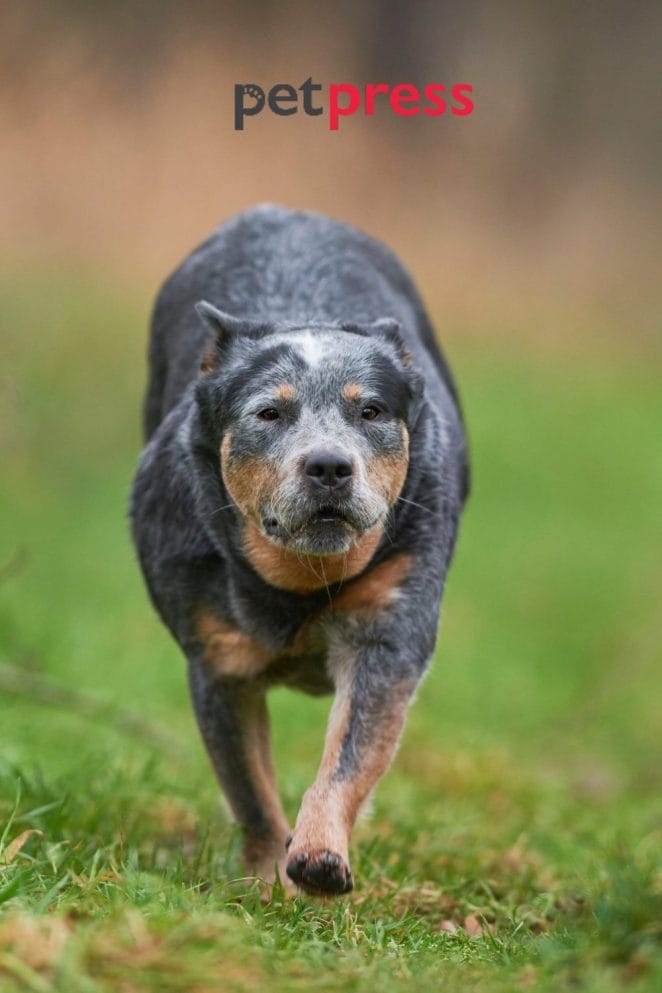
Engaging Activities and Games
To keep Australian Cattle Dogs entertained and mentally challenged, a variety of activities can be incorporated into their exercise routine. These activities provide mental stimulation while also engaging their physical capabilities. Here are some ideas:
- Fetch: Australian Cattle Dogs have an instinct to chase and retrieve objects. Playing fetch with a ball or a Frisbee not only provides a physical workout but also stimulates their problem-solving skills as they anticipate the trajectory and direction of the object.
- Agility Training: Set up an agility course in your backyard or participate in organized agility training classes. This activity involves navigating obstacles such as hurdles, tunnels, and weave poles. Agility training challenges their mental and physical abilities and strengthens their bond with the owner.
- Puzzle Toys: Interactive toys that require problem-solving, such as puzzle feeders or treat-dispensing toys, keep Australian Cattle Dogs mentally engaged. These toys encourage them to figure out how to access the treats or food, providing mental stimulation and preventing boredom.
- Hide and Seek: Engage your Australian Cattle Dog in a game of “hide and seek” by hiding treats or toys in various locations. This activity taps into their instincts to search and find, stimulating their mental faculties and keeping them entertained.
- Obedience Training: Continue to challenge Australian Cattle Dogs with obedience training even after they have mastered basic commands. Teach them new tricks, and complex commands, or work on advanced obedience skills. This ongoing training keeps their minds sharp and enhances their focus and responsiveness.
- Scent Work: Engage their exceptional sense of smell by participating in scent work activities. Hide scented objects or treats around the house or in your backyard and encourage them to use their noses to find them. This activity provides mental stimulation and taps into their natural abilities.
Activities such as chasing not only keep them mentally challenged but also strengthen the bond between you and your furry companion, leading to a more fulfilling and enriched life.
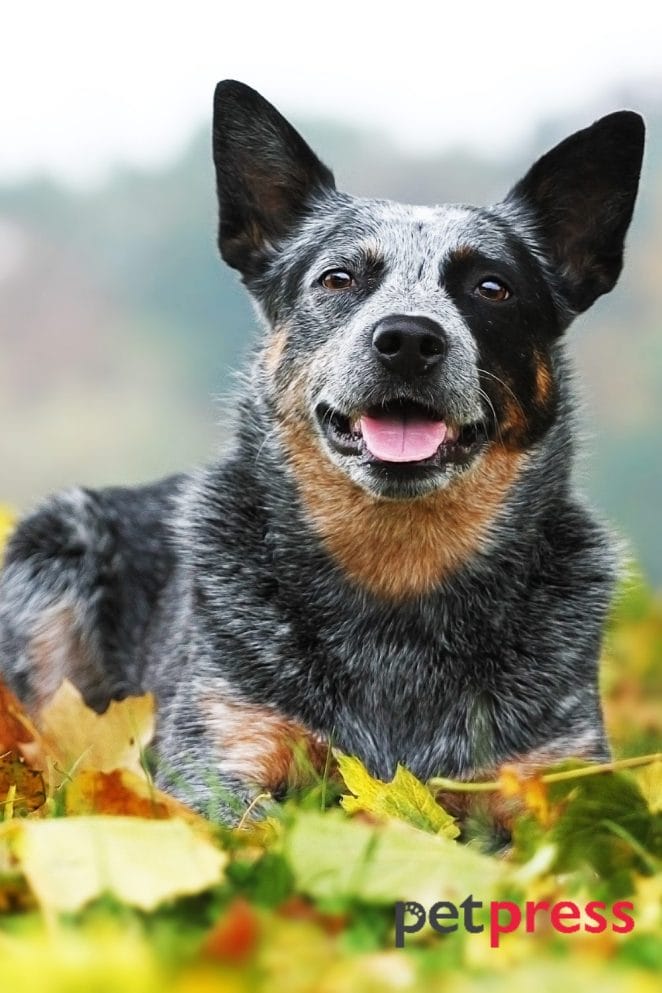
Incorporating Training into Exercise Sessions
Obedience training is not only essential for teaching Australian Cattle Dogs basic commands but also provides numerous benefits when incorporated into their exercise routine. Here’s why obedience training is beneficial and some suggestions for positive reinforcement and interactive training games:
Benefits of Obedience Training:
- Enhanced Communication: Obedience training establishes clear communication between the owner and the Australian Cattle Dog. It helps them understand commands, signals, and expectations, leading to better cooperation and a stronger bond.
- Mental Stimulation: Obedience training engages their minds, challenging them to learn and perform various commands or tasks. This mental stimulation satisfies their natural problem-solving instincts and helps prevent boredom.
- Improved Focus and Control: Training sessions improve the Australian Cattle Dog’s focus and self-control. They learn to pay attention, follow instructions, and make better decisions, which can be useful in various situations, such as walking on a leash or interacting with other animals.
- Safety and Well-being: Obedience training ensures the safety and well-being of the Australian Cattle Dog. Commands like “sit,” “stay,” and “recall” can prevent them from getting into potentially dangerous situations or aid in emergencies.
Positive Reinforcement Techniques:
Positive reinforcement is highly effective for Australian Cattle Dogs, as it helps build a positive association with training and encourages their natural desire to please. Here are some techniques to incorporate:
- Treats and Rewards: Treats should be provided immediately after the correct response to reinforce the connection between the behavior and the reward.
- Verbal Praise: Pair treats with verbal praise, such as enthusiastic “good dog!” or “well done!”
- Clicker Training: Use a clicker to mark the precise moment when the dog performs the desired behavior correctly.
Incorporating obedience training with positive reinforcement techniques and interactive games strengthens their bond with the owner. It provides mental stimulation, builds good behavior habits, and equips them with essential skills for a well-behaved and happy companion.

Outdoor Adventures: Exploring Beyond the Backyard
Australian Cattle Dogs have a natural inclination to explore. Taking them on outdoor adventures such as nature walks, hiking, or swimming can provide them with new experiences and mental stimulation.
Venturing beyond the confines of the backyard offers Australian Cattle Dogs a range of benefits for their physical and mental well-being. However, it’s important to prioritize safety during outdoor activities.
Let’s examine the benefits of exploration and provide some safety tips:
- Physical Exercise: Exploring new environments provides Australian Cattle Dogs with extended opportunities for physical exercise. They can run, walk, and engage in various activities that stimulate their muscles, cardiovascular system, and overall fitness.
- Mental Stimulation: Outdoor exploration exposes Australian Cattle Dogs to novel sights, sounds, and smells. This sensory stimulation keeps their minds engaged, satisfies their curious nature, and prevents boredom and restlessness.
- Socialization Opportunities: Venturing outside the backyard presents interactions with other dogs, people, and new environments. These encounters contribute to their socialization skills, promoting confident and well-behaved behavior in various settings.
- Bonding with the Owner: Outdoor exploration provides quality time and opportunities for bonding between the owner and the Australian Cattle Dog. Shared experiences and adventures strengthen the human-animal bond, reinforcing trust and companionship.
Safety Tips for Outdoor Activities:
- Leash and Identification: Always have your Australian Cattle Dog on a sturdy leash when exploring outdoor areas. Ensure they wear a well-fitted collar with identification tags, including your contact information in case they become separated from you.
- Secure and Fenced Areas: When allowing off-leash time, ensure the area is securely fenced and safe for your dog. This helps prevent them from wandering off or getting into potentially hazardous situations.
- Weather Considerations: Take weather conditions into account before heading outdoors. Extreme heat, cold, or inclement weather can pose risks to your Australian Cattle Dog’s health. Adjust the intensity and duration of the activity accordingly and provide access to shade, water, and protection from the elements.
- Awareness of Hazards: Be aware of potential hazards in the environment, such as toxic plants, bodies of water, or busy roads. Keep an eye out for any potential dangers and steer clear of them to ensure your dog’s safety.
- Tick and Flea Prevention: Use appropriate preventive measures to protect your Australian Cattle Dog from ticks, fleas, and other parasites commonly found in outdoor environments. Consult with your veterinarian to determine the most suitable preventive treatments.
- Training and Recall Skills: Ensure your Australian Cattle Dog has solid training and reliable recall skills before engaging in off-leash activities. This allows you to maintain control and call them back if needed.
By exploring beyond the backyard while implementing safety precautions, Australian Cattle Dogs can experience the physical and mental benefits of outdoor activities. It provides them with a dynamic and enriched life, supporting their overall well-being and happiness.
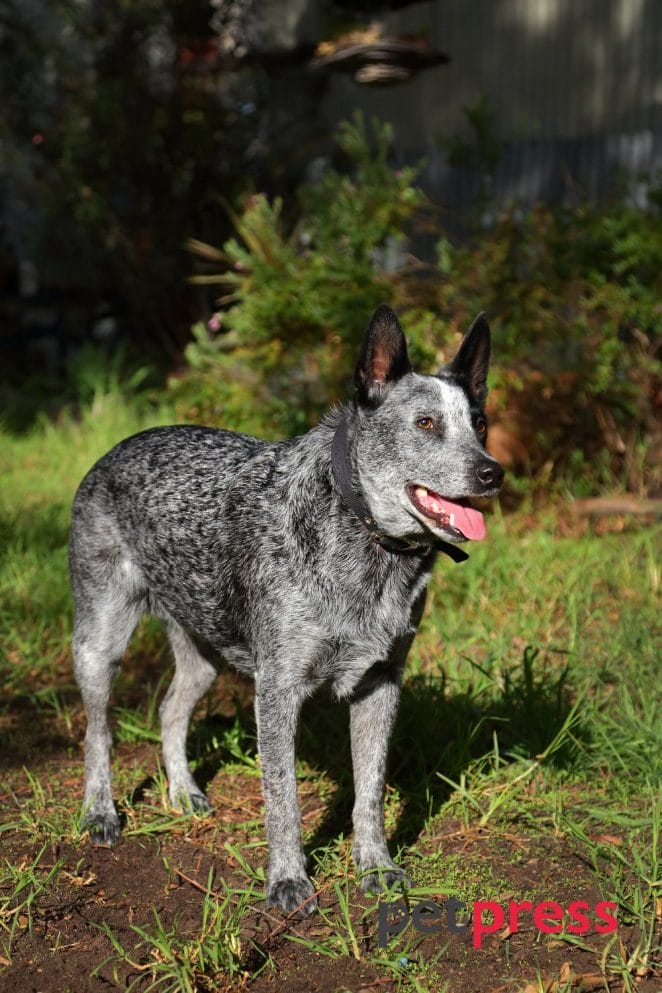
Precautions and Safety Measures
Weather Considerations for Exercise:
Exercise routines should be adjusted based on weather conditions to ensure the safety and well-being of Australian Cattle Dogs. Here are guidelines to follow in extreme heat or cold:
- Extreme Heat: Exercise during cooler hours, provide access to shade and water, and avoid hot surfaces that can burn paw pads.
- Extreme Cold: Layer your dog with a coat or sweater, limit exposure, protect paw pads from ice-melting chemicals, and watch for signs of cold stress.
Health Checks and Regular Vet Visits:
Regular veterinary visits are crucial for maintaining the overall health of Australian Cattle Dogs. Here’s why they are important:
- Routine Check-ups: Regular check-ups allow the vet to assess your dog’s overall health, identify any underlying issues, and provide appropriate advice for their exercise routine.
- Vaccinations: Keeping vaccinations up-to-date protects your dog from common diseases, ensuring they are healthy and able to participate in activities without health risks.
- Addressing Health Conditions: If your dog has any pre-existing health conditions, consult with your vet to determine the appropriate exercise regimen and any necessary precautions.
Socialization and Interaction with Other Dogs:
Socialization is crucial for Australian Cattle Dogs to develop good behavior and become well-rounded companions. Here are some tips for socializing them with other dogs:
- Dog-Friendly Parks: Visit dog-friendly parks or designated off-leash areas where your dog can interact with other dogs in a controlled environment.
- Playdates: Set up playdates with other well-socialized dogs that have similar energy levels. This allows for positive interactions and promotes healthy social behavior.
- Training Classes: Enroll your dog in positive reinforcement-based training classes or obedience courses. These classes offer controlled environments to interact with other dogs while learning important skills.
- Supervised Introductions: When introducing your dog to unfamiliar dogs, do so gradually and under supervision. Observe their body language and intervene if necessary to ensure safe and positive interactions.
Remember, each dog is unique, and it’s important to consider their individual temperament, health, and behavior when engaging in socialization activities. Consult with your veterinarian or a professional dog trainer for personalized guidance.
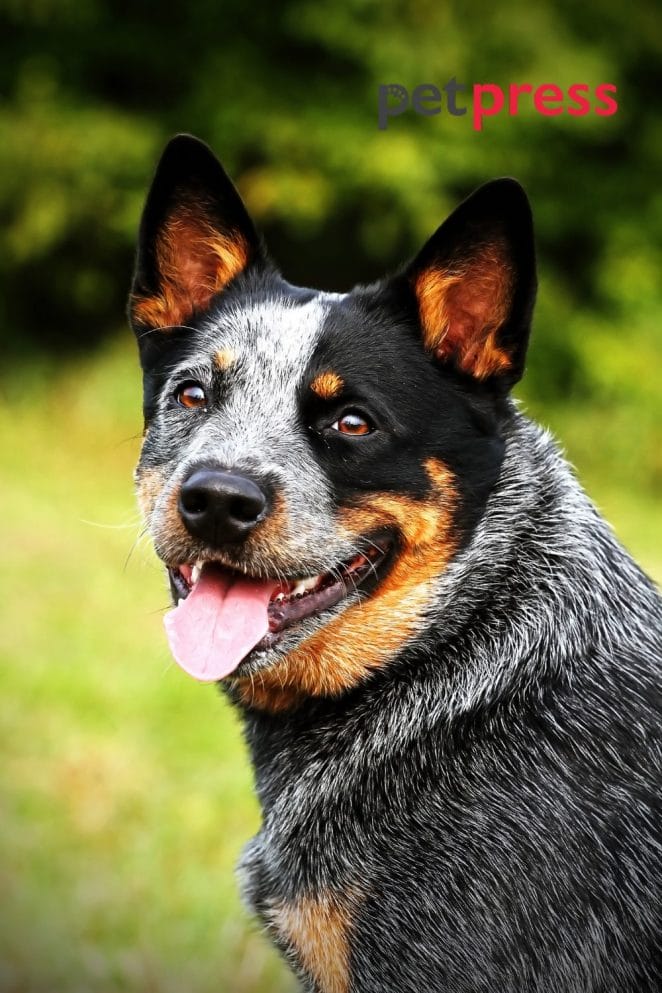
Wrap-up
In conclusion, Australian Cattle Dogs are a unique and energetic breed that requires ample exercise for their well-being. By understanding Australian cattle dog exercise needs, their history, physical characteristics, you can provide them with a fulfilling and engaging lifestyle.
Remember, a happy and healthy Australian Cattle Dog is the result of a well-structured exercise routine tailored to their age, energy level, and individual preferences. Let’s ensure these amazing dogs receive the exercise they deserve, allowing them to flourish both physically and mentally.
Help other pet owners improve their Australian Cattle Dogs’ lives by sharing this article on your social media channels. Together, we can create a community of knowledgeable and responsible pet owners who understand the importance of meeting the exercise needs of these remarkable dogs.
FAQs about Australian Cattle Dog Exercise Needs
Australian Cattle Dogs are highly energetic breeds that require at least 1-2 hours of physical activity daily to stay healthy and mentally stimulated.
Australian Cattle Dogs thrive on companionship and mental stimulation. Leaving them alone for extended periods may lead to boredom and undesirable behaviors. It’s best to provide regular exercise, mental stimulation, and companionship throughout the day.
Australian Cattle Dogs can be excellent family dogs but may require proper socialization. Their herding instincts may make them inclined to nip at heels, so supervision and training around children are important.
Australian Cattle Dogs are intelligent and eager to please, making them trainable. Consistent positive reinforcement and early socialization are key to successful training.
Australian Cattle Dogs are high-energy dogs that require ample space to exercise. While living in apartments or small spaces is possible, it’s important to ensure they receive sufficient daily exercise and mental stimulation.
Looking for animal quotes? Check these out!
100+ Best Funny Dog Quotes to Brighten Your Day
50 Inspiring Cane Corso Dog Quotes on Loyalty, Love, and Light


GIPHY App Key not set. Please check settings